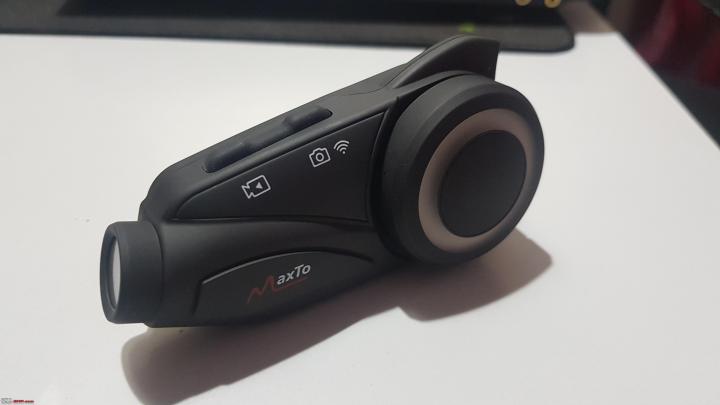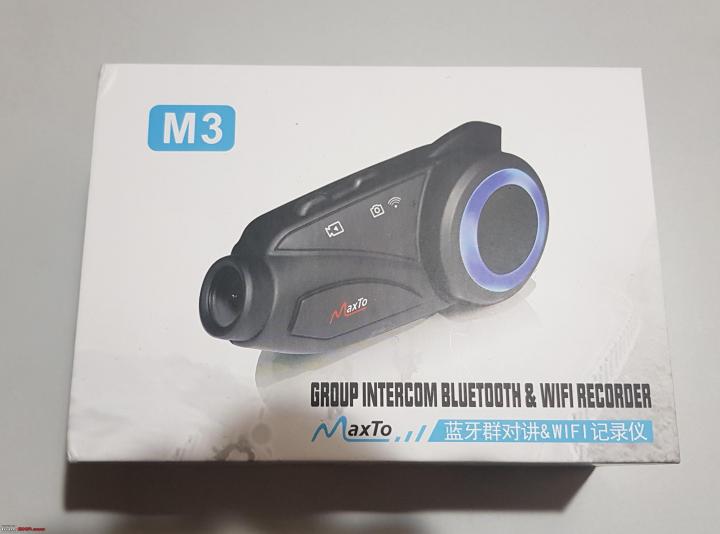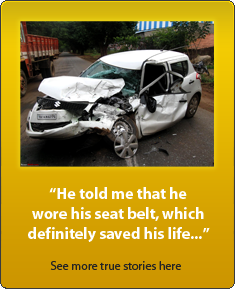News
Review: Maxto M3 Bluetooth headset and DVR for helmets
As someone who prefers to have a minimal number of accessories, the Maxto delivers in terms of functionality and performance.
BHPian nikhn recently shared this with other enthusiasts.
Introduction:
With the addition of a new bike at home that is daily ridden for office commuting as well as for regular weekend trips, I needed a Bluetooth communications device such as Sena or Cardo for easy phone calls and music. This market is filled with a range of products that do the job well. There are locally available products which tend to be either Chinese or those which are quite expensive.
Additionally, all my cars at home have DVRs for safety and this got me thinking as to whether I can get a DVR for my motorcycle as well. Standalone DVRs for motorcycles are available that require a control box and cameras to be mounted but I was not willing to tap into electricals nor hard mount cameras on the motorcycle. If you fancy this type, you can have a look at this which is purely a DVR. This product does not resonate with me as I also wanted to combine both in a single device as it makes it easier to carry where ever I go. Initially, I used a generic action cam with a helmet mount that can record at a good resolution. It was a hindrance to set it up every time I had to start my ride and there was some software issues in the camera that would randomly cut the video off. Battery life was poor at 1 hour which means I had to carry additional batteries that were cumbersome to change. However, this would mean that I also had to have a separate Bluetooth headset for calls and music. A casual browse on Aliexpress led me to the Vnetphone V6 that would be suitable for this purpose.
Earlier device: Vnetphone V6:

The Vnetphone V6 was purchased around 3 years ago and did the job of communication quite well. Available on Aliexpress, and being the cheapest version with multi-talk feature, it was a good entry level device.
Positives:
- Decent audio quality for calls as well as music (for the price). Audio was clear for the receiver as well as the caller with no/minimal wind buffeting noise. Music quality was acceptable with low bass. Additionally, it's not loud enough to drown out environment noise.
- Good battery life of up to 8 hours with audio and music combined. I would charge it once a week for a daily commute of 1-2 hours for 5 days.
- Ability to communicate with other similar devices via intercom. I found myself using this feature when going on rides for easy rider communication.
- Waterproof. I have ridden with this in severe rains and there has been no issues with electronics.
- Simple mounting. It has a clip that is screwed on to the helmet with a clamp and the device just snaps on. Easy removal is facilitated with the press of the tab and the device slides off.
Negatives:
- Tiny buttons made it difficult to operate with gloves on. There are a lot of buttons that were confusing when operating as you cannot see the buttons being pressed.
- Pairing was a challenge at times when it refused to connect unless re-configured.
- No DVR functionality.
Due to the multi-device, time consuming setup, I decided to upgrade to something that has both features - DVR + communications. As I lived in the EU, I had quick and easy access to motorcycle rider accessories. I looked into other options that were able to do this. The first thing that came up was the Sena 10C. This is quite expensive and with no warranty support, I wasn't willing to risk it since my plan was to use this device back in India and therefore, this was dropped. So, I looked back into Aliexpress for other alternatives.
Came across the Maxto M3. At a price of INR 8,000, it seemed like a reasonable option compared to the Sena. Granted, the quality of Sena would be better but, for this price, I was willing to risk it. Reviews for the same were acceptable as well.
Maxto M3:


The Maxto M3 was purchased and delivered to me in 10 days flat. Simple packaging included the device and its accessories. A pair of speakers, mics - with a flexible boom/rod as well as a wired mic, mounts - screw clamp or sticker based, along with the padding for the speakers, mic and the charging cable. The feature list got me interested with a lot of interesting claimed features.
Feature list:
- 1080p 30FPS loop video recording.
- Sony 120deg wide-angle lens.
- Bluetooth 5.0 communication with multi-device communication and intercom.
- Wi-Fi connection to view and download the recording on the go.
- Claimed operating range of 1000m.
- Voice prompt and voice dial.
- FM radio.
- Simple button controls with jog dial for volume adjustment and track change.
- 1600mAh battery.
- Supports up to 128GB class 10 micro SD card.
- Water-proof.
- Claimed Bluetooth time of 32 hours.
- Claimed video recording time of 7 hours.
Package it came in:

Feature list:
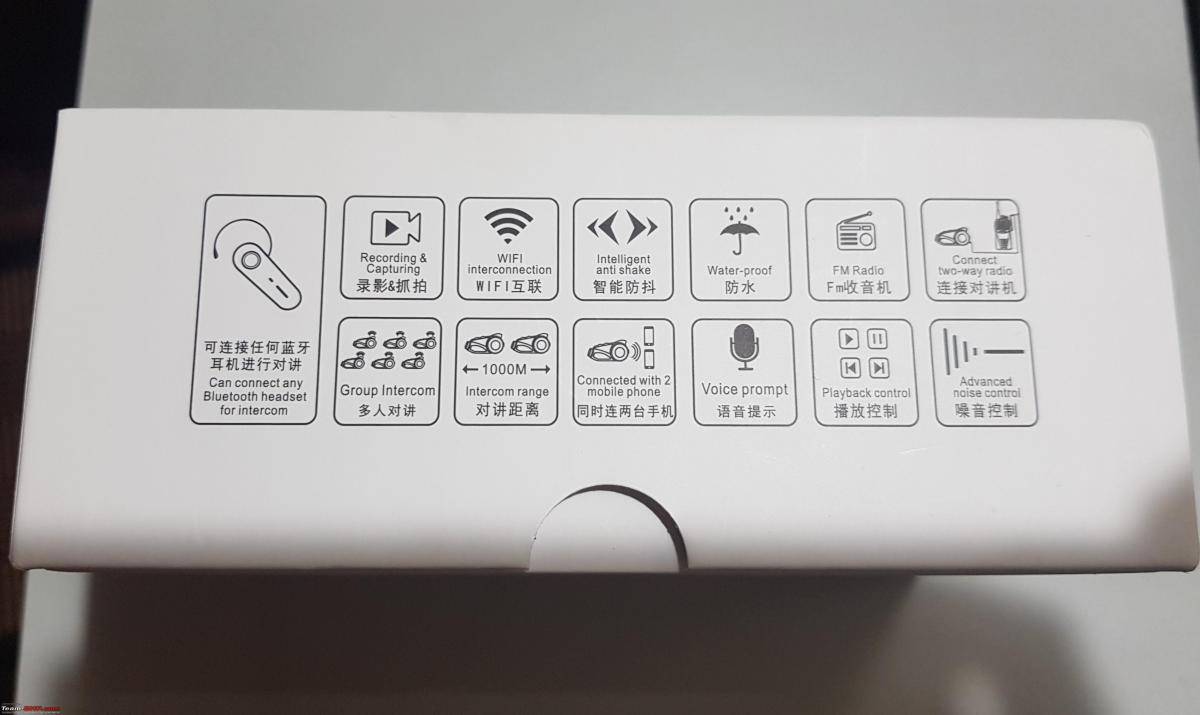
Accessories present in the box:
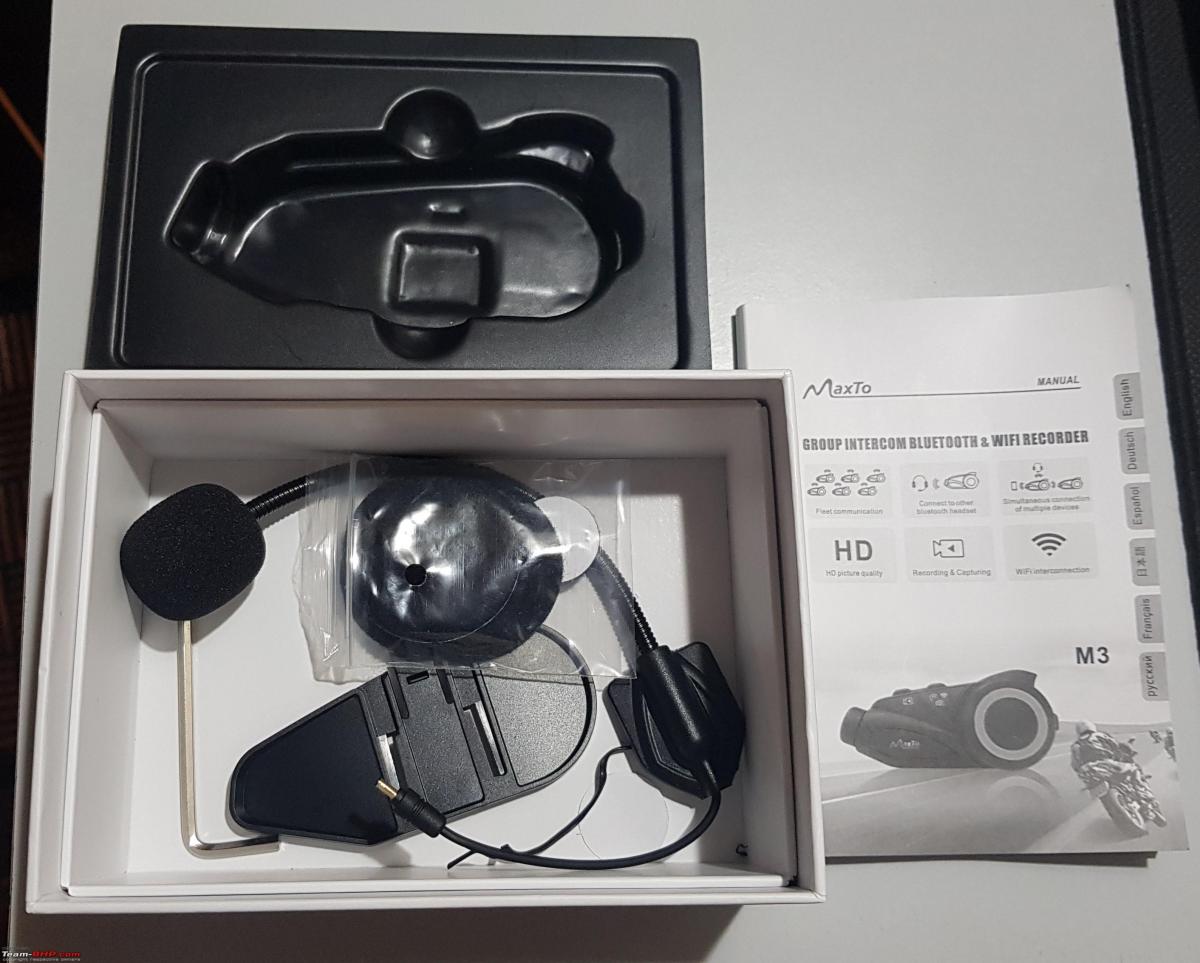
Installation and Review:
The mounting of Maxto is similar to the one on the Vnetphone. I used the clamp provided, which mounts on the helmet using Allen screws. The clamp has a rubber padding that prevents damage to the helmet paint when resting on the shell, which is a neat touch that wasn't present on the Vnetphone. Once the clamp is mounted, the device can be clipped on with a snap. Removal is as easy as pressing a tab on top and sliding the device upward.
Held with Allen screws and a snap-on clip:

Notice the mic hole (left) for the DVR:
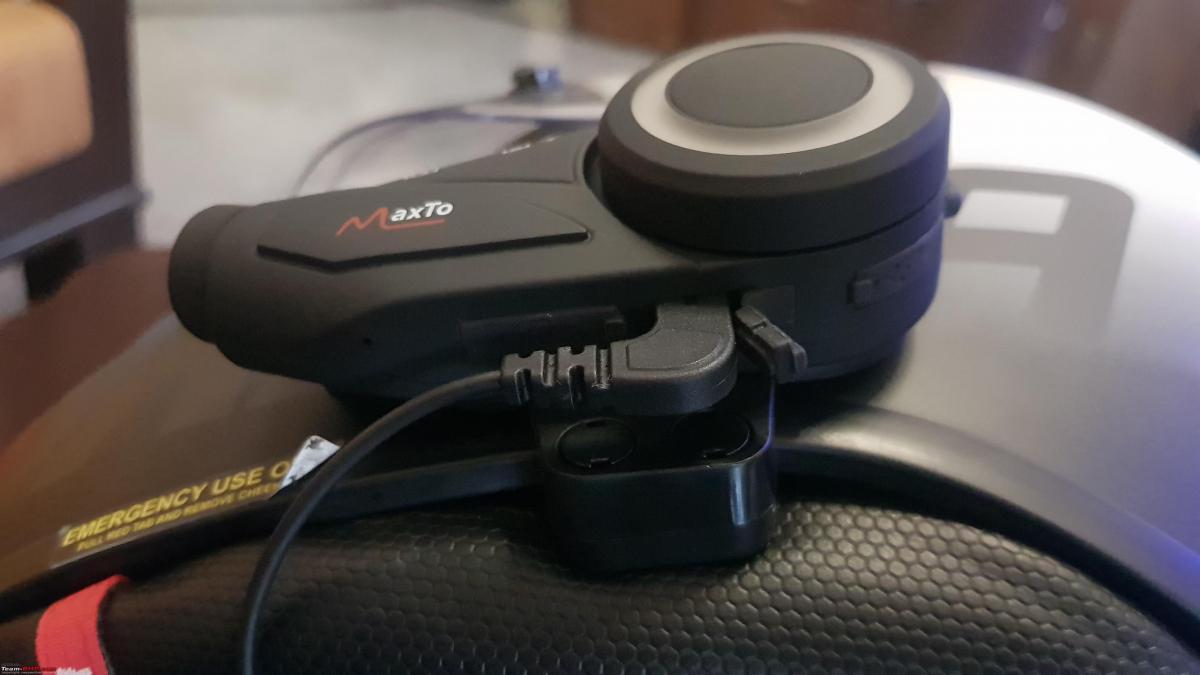
The communication speakers are mounted directly in the speaker slots provided within the helmet. They come with velcro strips behind that hold onto the existing velcro in the slots of the helmet. If these are not present, additional velcro pads are provided to mount the speakers. Two mics are available - one with a boom and one without, presumably for half and full face helmets, respectively. These can be interchanged easily with a mini AUX/power connector that runs along the speaker wiring.
Mic mounted using velcro sticker:

Build: The fit and finish is good. The device body has a smooth matt finish and a rubbery-like texture. The buttons are sealed from the elements and respond with a sharp click. The camera is located at the front and is tilted upward to compensate for the head tilt during riding. The bottom has 3 slots - first one for the microSD card, second for the speaker and mic connections via a micro USB and the third for the charging cable which is also via micro USB. The front consists of a jog dial which rotates forward and back smoothly, and resets to its default position with a spring-like action. There is some play where the jog dial tilts but nothing that is worrisome. Since there is some gap between the jog dial and the body, there is a possibility of dust accumulation that may hinder the button operation. This has to be checked over time. It can also be clicked to play/pause music or disconnect calls. The top of the device consists of 2 buttons, one to power on the DVR and the other to power on the Wi-Fi. The power button for the Bluetooth is situated at the back. The Bluetooth power is independent from the DVR and vice-versa and can be run without switching on the other. The Wi-Fi switches on only if the DVR is on. I tested the buttons in the moderate rain and there were no issues.
Ports for micro SD card, speaker and mic connector and charging:

The slots mount onto the clip on the helmet:

Power button at the rear:

DVR button (left) and Wi-Fi button (right). The Wi-Fi button also acts as a shutter button to capture photos when recording:
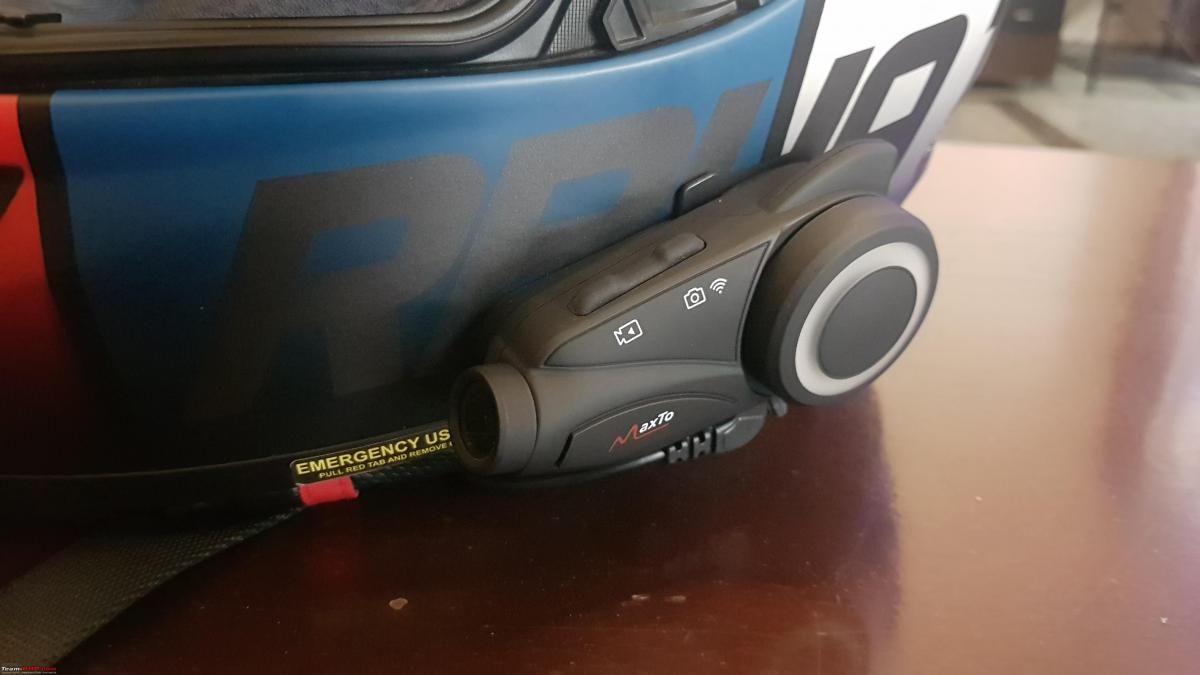
Speaker and mic connected to the device. Notice the DVR mic to the left of the microSD card slot:

Front view:
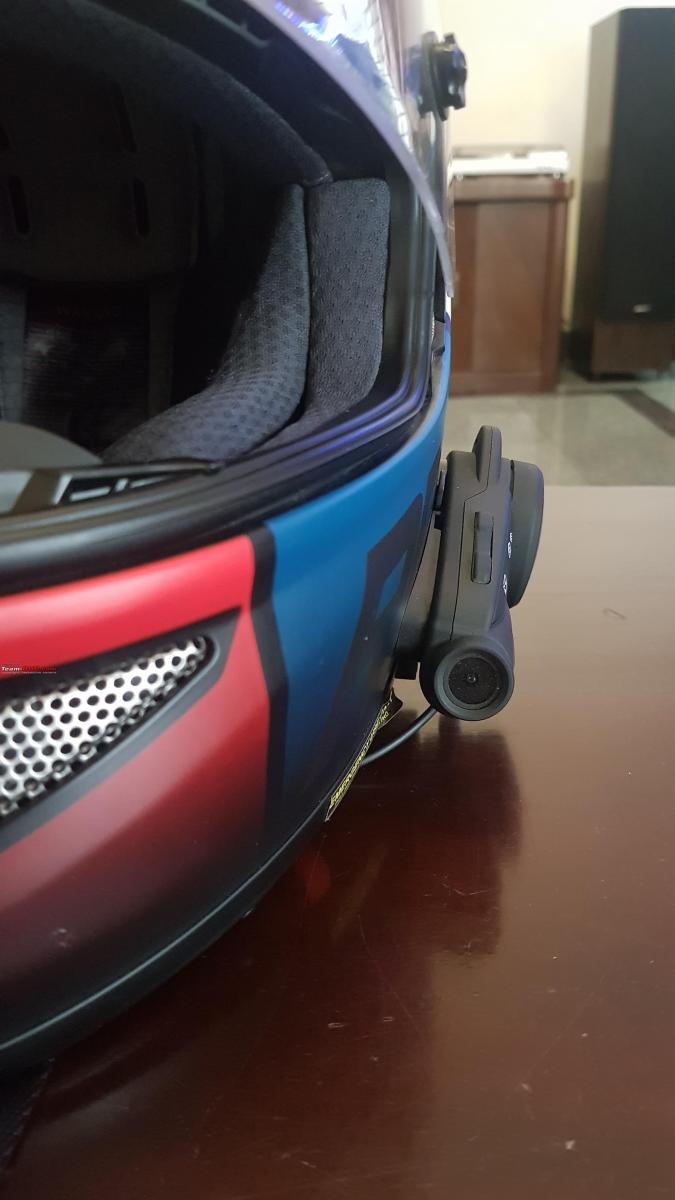
The power button is held for 3 seconds to switch it on. Voice prompts indicate the status of the device and is useful when you cannot see the device and don't know the current status. There are voice prompts for Bluetooth connection, FM radio switch, DVR on/off, Wi-Fi on/off, photo capture, start/pause recording and more.
Flashes blue when connected to Bluetooth. Flashes green when DVR is active. When both are active, it flashes alternatively between blue and green. The light is bright enough to act as a visibility device.

When off, easy access to buttons and the jog dial:

Manual, App and Wi-Fi usage: The manual gives detailed instructions on how to pair and connect the DVR to the phone via Wi-Fi in addition to the other functions usage. Via Wi-Fi, the videos can be downloaded directly on your phone. DVR settings can also be adjusted. It needs an app (Ricam) to do this and this is not available on the Play Store but strangely available on the Amazon app store which has to be downloaded separately. I am not sure about the security of this app but it has not asked me permission to access unnecessary locations on my phone. The app interface is simple and concise.
Audio quality:
The audio quality is much better than the Vnetphone V6. Voice is crystal clear and the receiver can hear clearly with no distortion or disturbance. The volume was quite loud and I had to tone down the volume. Same for the music as well. The speakers had to be initially burnt-in? after which the audio quality improved significantly. Calls are picked automatically after 2 rings and can be disconnected by the jog dial. Music is loud with a much better bass effect compared to the Vnetphone. However, it is not as good as a standalone Bluetooth headset from popular brands. External noise is not completely eliminated and can be heard if the music is not loud enough. The jog dial makes it much much easier to change tracks, adjust the volume and play/pause music. I am yet to test the device for intercom quality. Overall, audio quality is an improvement over the Vnetphone and does the job really well.
DVR video quality:
The recording starts instantly when the record button is pressed and is backed by a voice prompt for the same. The video quality is decent enough for regular recordings but not for vlogging with the same. The number plates of nearby vehicles are visible clearly. The 120 degree wide angle helps a lot and covers the entire road on both sides. On my helmet, the DVR tilts a little to the right and this captures a much larger area of the oncoming traffic. I feel this is inadvertently good from a safety point of view. The recordings are by default in loop and I intend to keep it that way. The older recordings are deleted to make space for the newer recordings. The recording time limits can be set for 1, 3 and 5 minutes (default). Within the app, different settings are present to change camera exposure level, image quality and resolution, and more. I use a Sandisk 64 GB class 10 micro SD card for the DVR.
Daytime videos are clear but there is some noise in the video with some sort of purple hue at the corners or in darker sections of the video. I am not sure if the exposure has to be adjusted for this. Objects are clearly visible and can be distinguished, for example, vehicle number plates. The date stamp appears on the bottom left. The audio for the video is picked up by a mic on the device itself and not via the mic for the communication. I did not like this as there is a lot of wind noise picked up as the speed increases. The mic also pics up the button clicks when recording, especially the one from the jog dial.
During night time, the video quality worsens a little with more noise but does not render the video useless. There is slight flickering observed that is accentuated at night. Number plates are clearly visible and the vehicles are also recognisable. For my usage, this is more than sufficient. This may not satiate riders who like to vlog their rides. From a functionality point of view, it strictly performs as advertised - a DVR and again does that job really well.
Here are links to the day time and night time videos that I have taken on a short ride within the city:
Battery Life: Battery life so far has been good. For a usage of over 1 hour, there has been a 20% drop in the battery levels as indicated in my phone as well as on the app. With a combined usage of the Bluetooth and the DVR, I don't think it will achieve the claimed 7 hours of battery life. If I am able to get at least 5, then it should suffice for me. Using only the Bluetooth may give a longer life. This has to be tested and I will do so over the week. I will give an update on this here in due time.
Verdict:
As someone who prefers to have a minimal number of accessories, the Maxto delivers in terms of functionality and performance. The audio and video quality checks all the boxes for me. The challenge is its procurement in India with the Aliexpress ban. If you are looking for a DVR+Bluetooth device that can do basic tasks with a decent quality, look no further. The Maxto is an All-In-One device that meets my requirements. Only time will tell if the device can maintain the quality. However, for the price, I believe I should not expect too much. The Vnetphone has served me for 3 years and I expect this will too. The Maxto M3 is compared with the Vnetphone V6 and nothing else. Maybe the Sena would sound better. It also has a better resolution and video sensor. Is it worth the extra money for my usage and application? I don't think so.
Check out BHPian comments for more insights and information.



